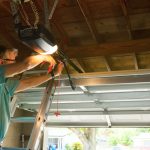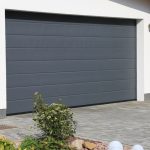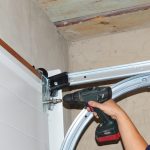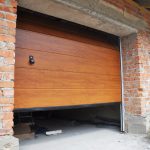
With the massive weight of your garage door, it is pretty amazing how it is so easily lifted and lowered on the ground whenever it is being opened or closed. While it is your garage door opener which is responsible for the automatic operation of your garage door, the actual work of lifting lies on the coils of your garage door spring.
There are basically two types of garage door spring: the torsion spring and the extension spring.
Torsion springs normally can be seen mounted above your garage doors. They are springs horizontally placed on your torsion bars near the opening of your garages. They are responsible for distributing the weight of your garage door evenly throughout the whole unit for a more balanced operation. This removes the slight shaking of the garage door that signals instability whenever it is being used.
Some garage doors have more than one torsion spring. The number depends mainly on the weight it carries and the number of doors you have. The more doors, the more springs you need to maintain stability.
Extension springs, on the other hand, are a much older type of spring system. It is usually found on both sides of the garage doors, attached to the track support at one end through a set of cables. Although they work well in enabling your door to move against gravity, it does not have the same effect on the balance of your garage door as the torsion springs have.
Your garage door spring is one of the most important components of your garage door. It is the one responsible for the holding the entire weight of your garage door. Without it, although your openers could initiate automatic operations, your garage doors would be too heavy to lift, if not impossible.
Torsion springs and extension springs, though they have the same function, work differently. With torsion springs, as your door is lifted to open, the torsion springs unwind and the stored tension does the actual lifting by turning the shaft that consequently turn the cable drums, making the cables around the cables of the cable drum. When the door is lowered to close, the cables again unwrap from the drums and the springs are rewound to full tension.
Extension springs lift your garage doors through a system of pulleys and counterbalance cables running from the bottom corner brackets through the pulleys. When your garage door is opened, your extension springs contract, lifting the door as the tension is released.
No matter what type of garage door springs you have, it is important to have them in perfect condition always as it is critical in the smooth function of your garage doors. If you detect anything suspicious when it comes to how they move or sound, call Midlothian Garage Doors to check for problems. This will prevent avoidable accidents from occurring.
Like any device that is used regularly, your garage door springs eventually suffer from wear and tear. This is why, it is a must that it is inspected regularly and be subjected to regular maintenance. Garage door springs hold a huge amount of tension, that when released, may cause accidents or injuries.
Set up an appointment with Midlothian Garage Doors. We conduct regular garage door inspections and tune-ups and maintenance service that prevent you from dealing with sudden breaking of your springs. We can also help ensure that they last as long as possible, saving you money from constant repairs and replacement.





